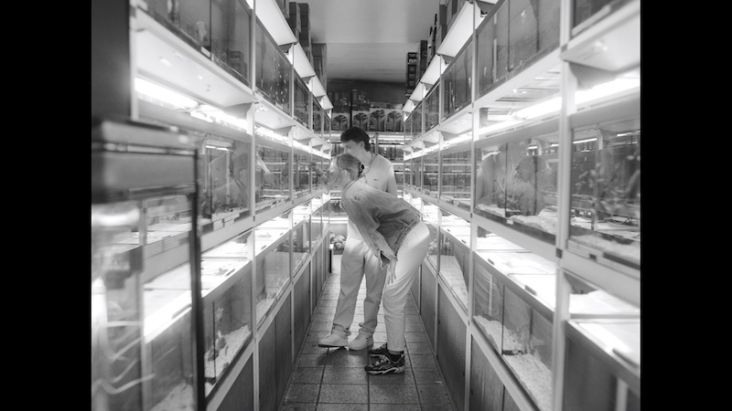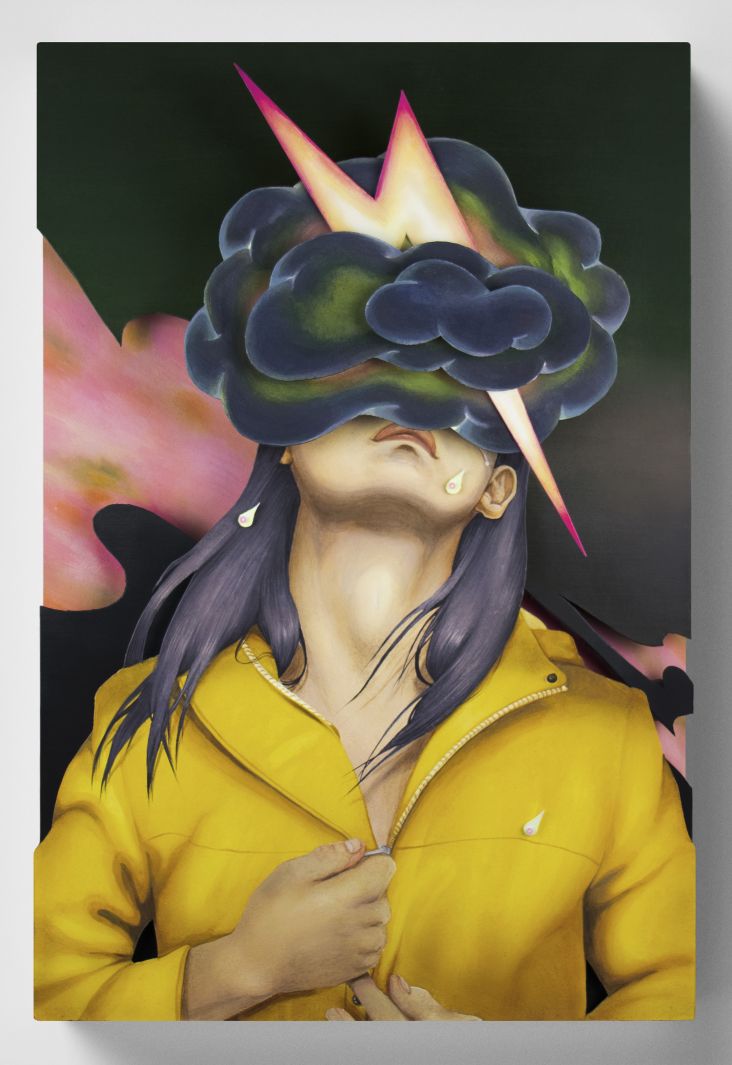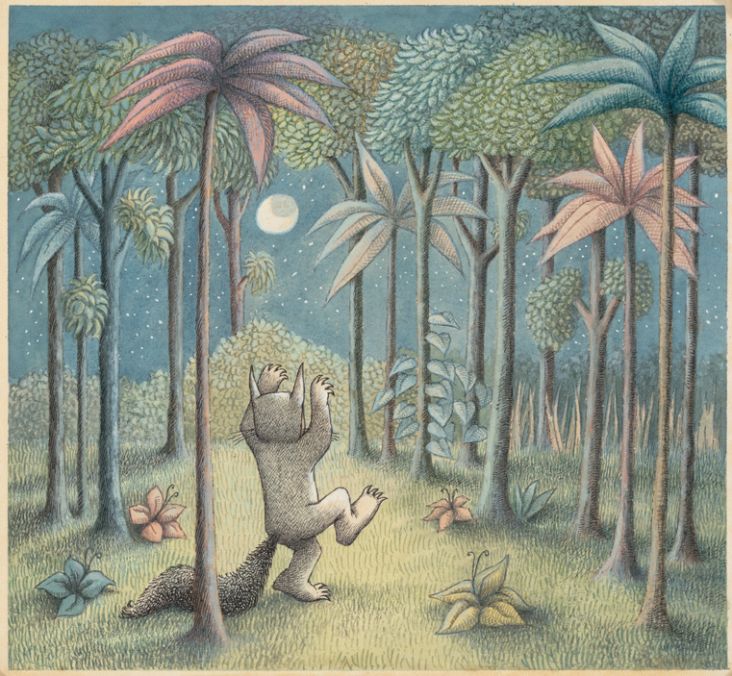Romain Jacquet-Lagrèze offers a fresh take on Hong Kong's most famous mountain
A new exhibition and book provide an intriguing perspective on Hong Kong's life, community and culture.

© Romain Jacquet-Lagrèze, Bather in Lei Yue Mun, Hong Kong 2020, Courtesy of Blue Lotus Gallery
There's something quite humbling about the power and permanence of a mountain. As the Tang dynasty poet Li Bai once wrote: 'We sit together, the mountain and me, until only the mountain remains'.
But while we're used to seeing images of the same-old peaks (Everest, Fuji, Kilimanjaro, K2), it's the lesser-known mountains that are often more interesting – especially when seen from the perspective of the bustling world around them.
So we're hugely excited by Romain Jacquet-Lagrèze's upcoming book launch and accompanying exhibition, entitled Thirty-six Views of Lion Rock.
As Hong Kong's most famous peak, Lion Rock is laden with symbolism. Romain, who was born in Paris in 1987 and moved to Hong Kong in 2009, was inspired by Hokusai's 1830 woodblock series '36 Views on Mount Fuji' and set out to capture the many faces of Lion Rock in a similar yet contemporary fashion.

© Romain Jacquet-Lagréze, Peculiar Proximity, Hong Kong 2021, Courtesy of Blue Lotus Gallery
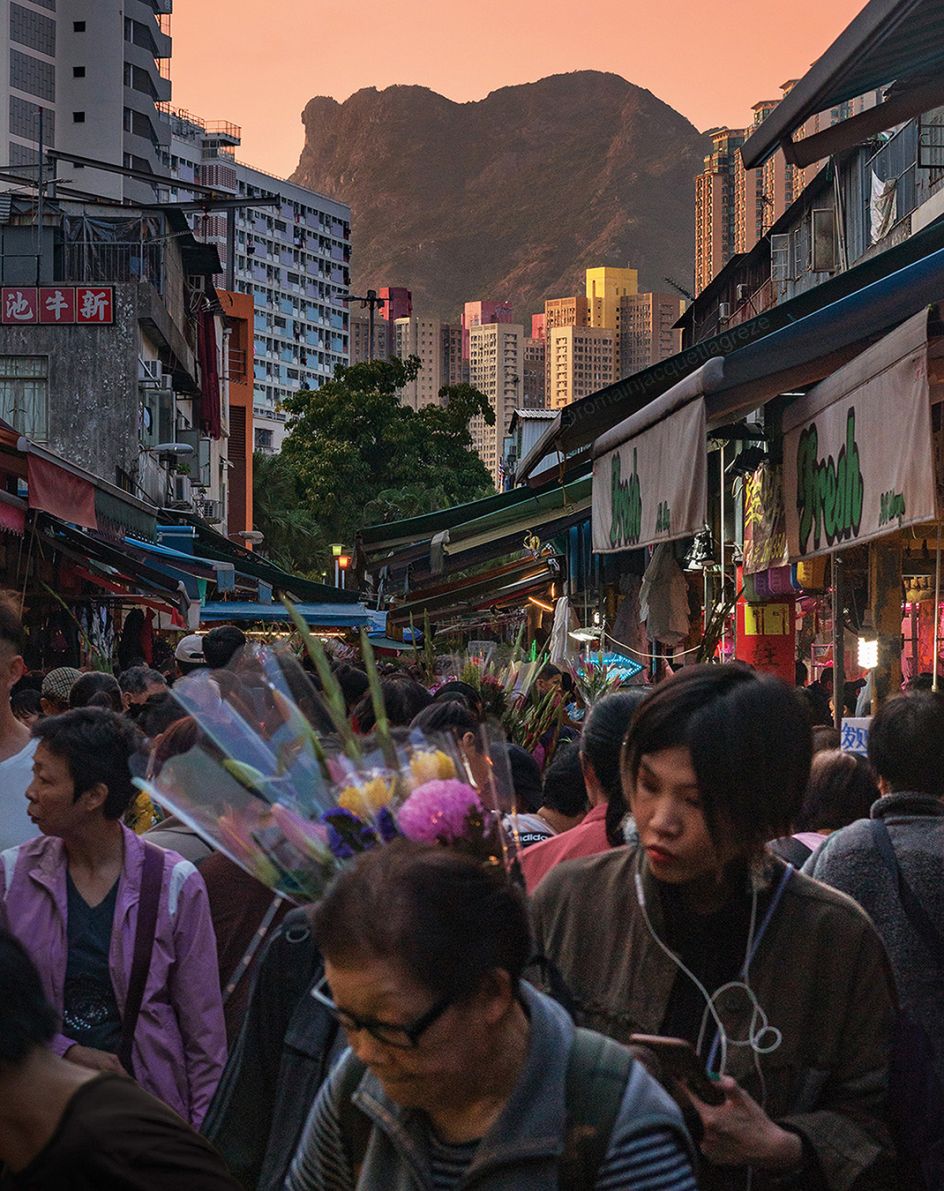
© Romain Jacquet-Lagréze, Flower Market, Hong Kong 2020, Courtesy of Blue Lotus Gallery
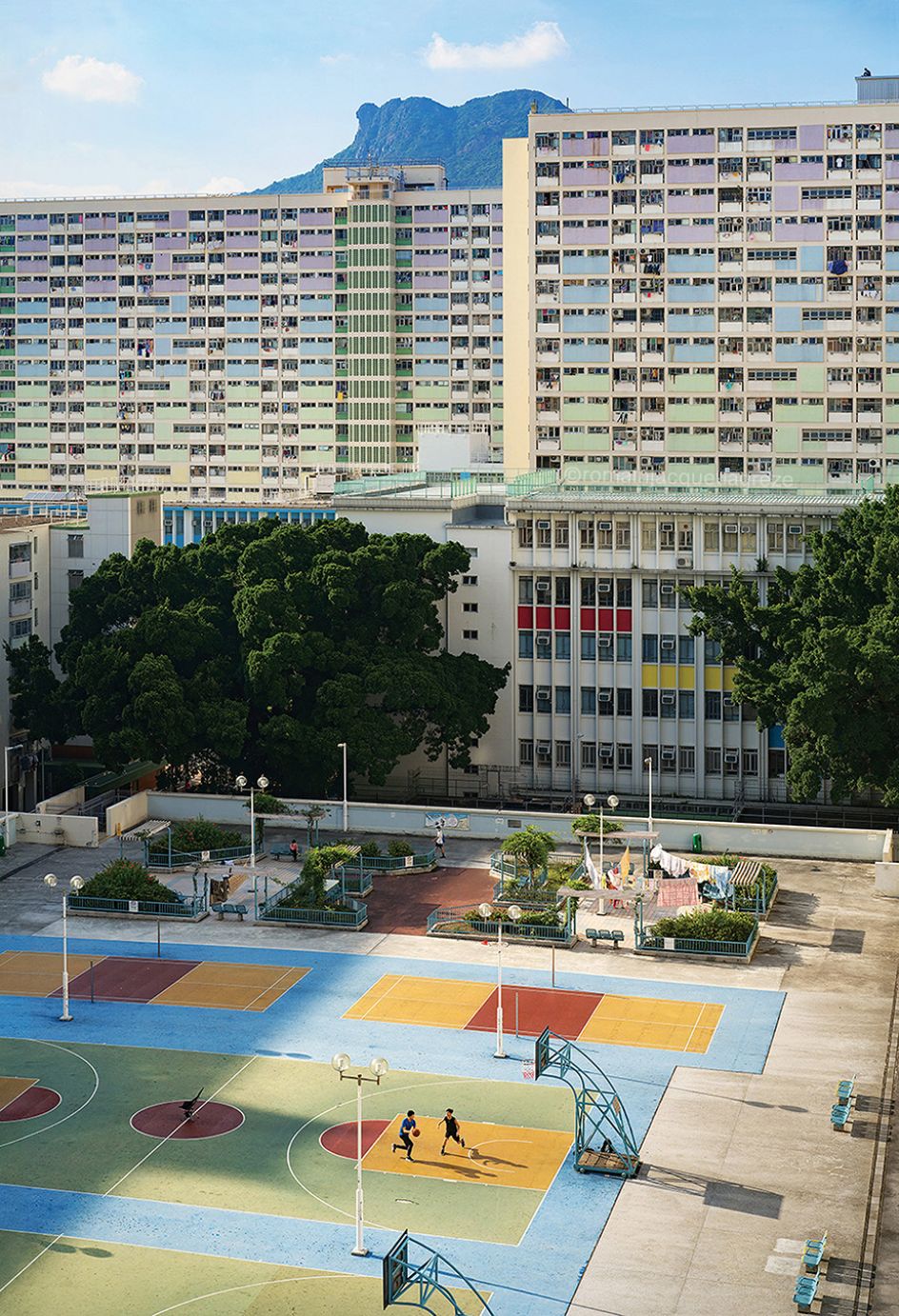
© Romain Jacquet-Lagréze, Youth Vibrancy, Hong Kong 2020, Courtesy of Blue Lotus Gallery
In some photos, it appears in the far distance, obscured by high-rise buildings, traffic or bustling markets. In others, it's more prominent, far removed from the urban jungle, oozing peace and tranquillity. Some photos are shot at the break of the day, others during the blue of dusk.
These mundane scenes are all those that Hong Kong people may have seen or recognised, either on their daily commute or right outside their window. In short, this book and exhibition read like a visual love letter to a mountain that Hongkongers know and love so well.
As Mona Chu notes in the foreword to the book: "Lion Rock, an oddly shaped mountain straddling a few districts in Kowloon and the New Territories, is perhaps the biggest myth embraced by the pragmatic Hong Kong people. Like any myth, it is a fluid body of narratives by generations of eager writers. Conversations around the Lion Rock continue to evolve as different people are seeking to redefine it."
The Lion Rock became a pop culture icon in the 1970s through the television series Below the Lion Rock, produced by public broadcaster RTHK. Each episode would feature the daily lives of grassroots people, reflecting their circumstances and social conditions of the time.
"Though unintended by the producers, the characters of the show and its eponymous theme song came to symbolise the collective determination to work hard for prosperity while helping their communities in times of adversity," says Mona. "Over time, many people who resided in Hong Kong came to see Lion Rock as a representation of the city's collective spirit."

© Romain Jacquet-Lagréze, Glowing Pier, Hong Kong 2020, Courtesy of Blue Lotus Gallery

© Romain Jacquet-Lagréze, Shek Kip Mei Street, Hong Kong 2021, Courtesy of Blue Lotus Gallery

© Romain Jacquet-Lagréze, Contemplative Gardener, Hong Kong 2020, Courtesy of Blue Lotus Gallery
For Romain, too, the mountain has a personal significance. "Throughout the years, I've regularly visited my in-laws for birthday dinners and traditional Chinese celebrations," he explains. "Many of these gatherings take place in Wong Tai Sin, where the grandparents live.
"Each time we would get out of the MTR station and pass Lung Cheung Road when heading towards the banquet restaurant. We could not help but see the imposing vision of the crouching lion atop the mountain, quietly watching over the city. This view has left such a strong imprint on me, and at each experience, I kept thinking to myself that I must bring my camera and try to capture that feeling."
This book and exhibition not only explores the many narratives the Lion Rock embodies but also serves as a reminder for those who resonate with Hong Kong as home.
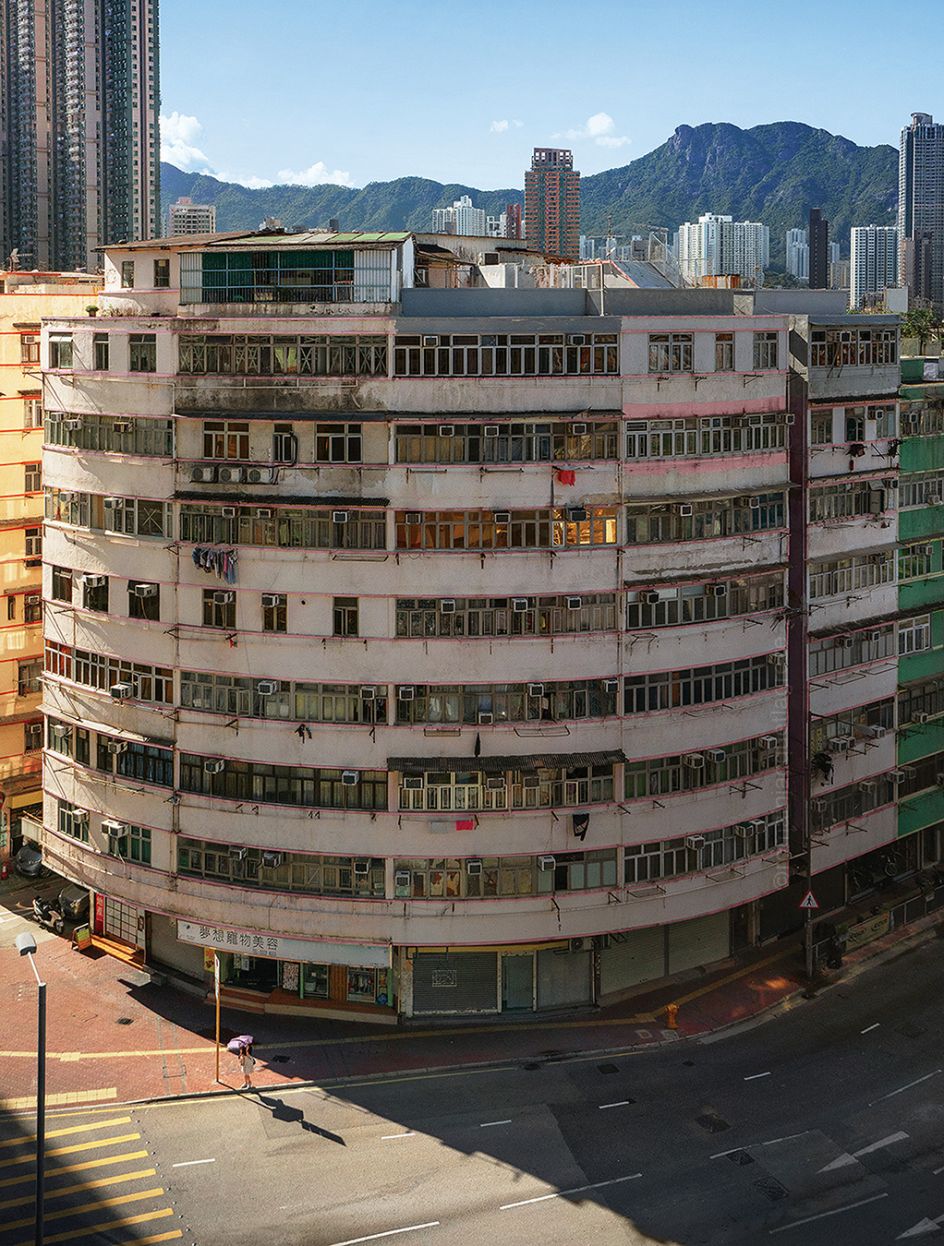
© Romain Jacquet-Lagréze, Under the Scorching Sun, Hong Kong 2021, Courtesy of Blue Lotus Gallery
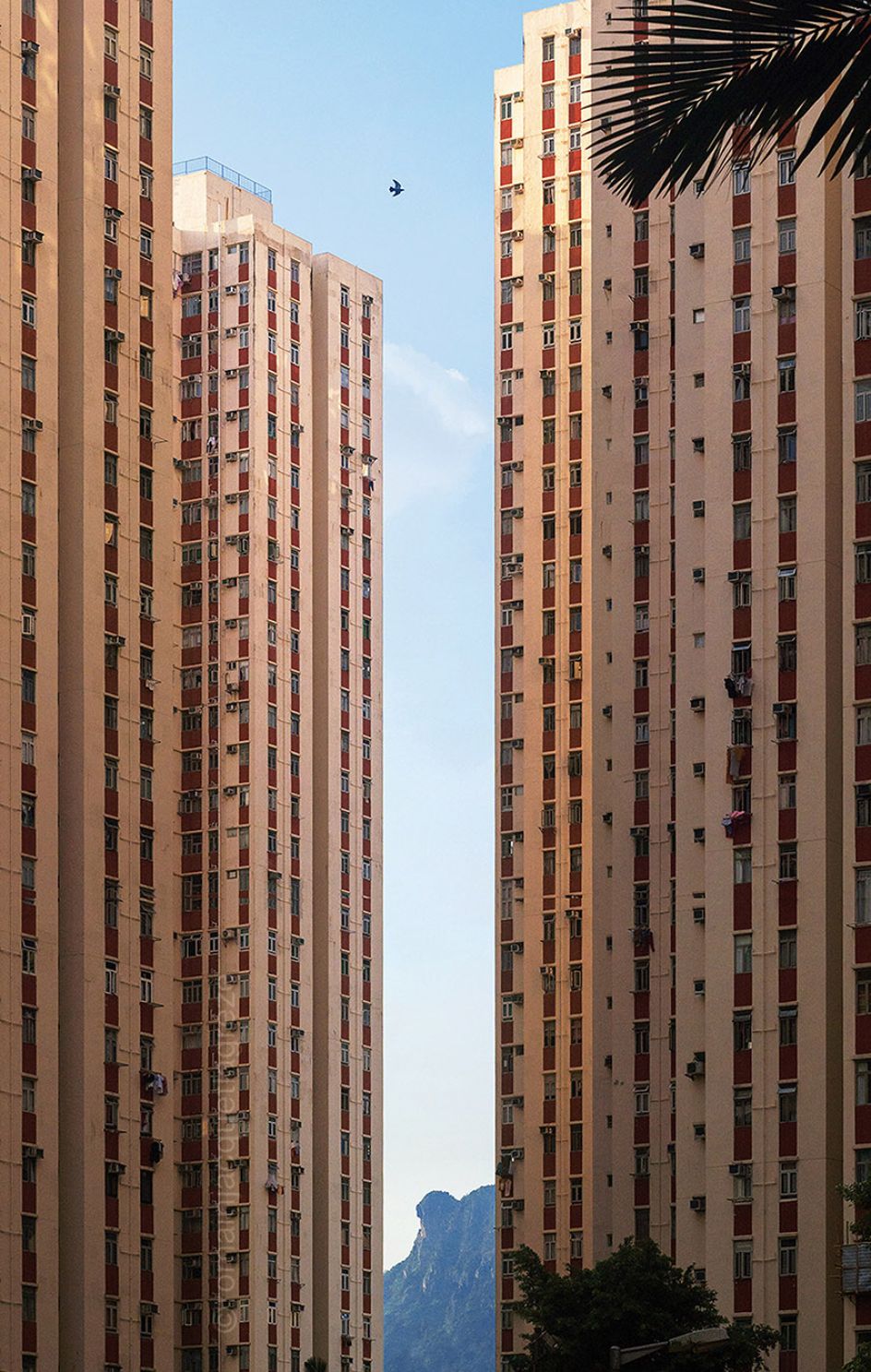
© Romain Jacquet-Lagréze, Narrow Opening, Hong Kong 2020, Courtesy of Blue Lotus Gallery

© Romain Jacquet-Lagréze, Crouching Lion Watching over the City, Hong Kong 2021, Courtesy of Blue Lotus Gallery
Thirty-six Views of Lion Rock will be published by Blue Lotus Editions, the newly established publication arm of Blue Lotus Gallery, 28 Pound Lane, Sheung Wan, Hong Kong, on 8 September. It will be the first in a series of visual stories on Hong Kong as curated by Sarah Greene. You can order your copy here.
The exhibition takes place from 9 September-9 October at the Blue Lotus Gallery, 28 Pound Lane, Sheung Wan, Hong Kong. (Tue–Sun, 11am–6pm, closed on public holidays.) On Sunday 18 September, Romain will give a talk at the gallery at 2pm.




 by Tüpokompanii](https://www.creativeboom.com/upload/articles/58/58684538770fb5b428dc1882f7a732f153500153_732.jpg)


 using <a href="https://www.ohnotype.co/fonts/obviously" target="_blank">Obviously</a> by Oh No Type Co., Art Director, Brand & Creative—Spotify](https://www.creativeboom.com/upload/articles/6e/6ed31eddc26fa563f213fc76d6993dab9231ffe4_732.jpg)









